Computing
Intent
At New Bewerley, the intent of our computing curriculum is to provide all pupils with the knowledge of information technology, digital literacy and computer science. We aim to equip children with the skills to adapt to new technology. The scheme is carefully designed to give the children confidence to use ICT and computing skills to further their learning and assist them in everyday life. Teach computing is sequenced to supports our key drivers, collaborate, celebrate, commit, create and contribute each unit.
Building on this knowledge and understanding, pupils are equipped to use information technology to create programs and access a range of content throughout relevant software apps and hardware technology. Computing also ensures that pupils become digitally literate – able to use, and express themselves and develop their ideas through, information and communication technology. Our curriculum has been designed to incorporate uses of technology such as Microsoft Word, PowerPoint, as well as a variety of iPad applications such as audacity and easysense. Exposure to up to date apps allows children know more, remember more and do more.
The school’s aims are to:
- - Provide a broad, balanced, challenging and enjoyable curriculum for all pupils.
- - Develop pupil’s computational thinking skills that will benefit them throughout their lives.
- - Meet the requirements of the national curriculum programmes of study for Computing at Key Stage 1 and 2
- - To stimulate interest in new technologies.
- - To equip pupils with the confidence and skills to use digital tools and technologies throughout their lives.
- - To enhance and enrich learning in other areas of the curriculum by cross curricular use of ICT
- - To develop the understanding of how to use computers and digital tools safely and stay safe online.
Ultimately, our intent is to ensure that by the end of primary school, all pupils leave New Bewerley with positive attitudes towards technology, equipped with the skills and knowledge to succeed in secondary school and future careers.
Implementation
In Early Years, the key focus is on technology forms an element of the EYFS goal understanding the world. It aims to ensure that children recognise that a range of technology is used in places such as homes and schools and can select and use technology for particular purposes. Such as beebots for the initial coding and programming experiences which will be evident for progression following up throughout the school years.
Example of a Year 2 Skills Progression
In Key Stage 1 and 2, all class teachers follow the planning provided by ‘Teach computing’. This is an online resource that supports the teaching of computing for all ages. Teach Computing units link to the three areas of Computing, outlined in the National Curriculum programmes of study – Information technology, Digital Literacy and computer science. Staff are expected to utilise this resource to plan a bespoke computing curriculum that builds children’s cultural capital and basic IT skills. Each class teaches computing on a weekly basis. The hardware may differ due to nature of the lesson. Evidence of teaching and learning and make use of the school’s progression of vocabulary to allow children to become competent computer users.
Example of a Year 5 Knowledge Organise
Assessment:
We use a combination of formative and summative assessment to monitor progress and inform teaching.
- Formative assessment takes place during every lesson through observation, questioning, and immediate verbal feedback. Teachers assess how pupils perform, apply skills, and collaborate, adapting lessons to meet individual needs.
Summative assessment occurs at the end of each unit. Teachers use the ‘must know’ knowledge for that specific unit to be able to gauge where the children are in terms of their learning. Children will be assessed as working towards or as expected standard.
As children progress through the year groups and the skills of coding and debugging and logical reasoning and creation of programming improve then the GDS aspect of assessment will be introduced.
Y1 Must Know Knowledge Example
Impact
At our school, our computing curriculum is designed to embody our core values: Every Child, Everyday... Engaged in Learning, Prepared for Their Future, Nurtured for Growth.
After the implementation of this computing curriculum, children at New Bewerley Community School will become digitally literate and able to join the rest of the world on its digital platform. They will be equipped, not only with the skills and knowledge to use technology effectively and for their own benefit, but more importantly – safely. The biggest impact we want on our children is that they understand the consequences of using the internet and that they are also aware of how to keep themselves safe online.
As children become more confident in their abilities in Computing, they will become more independent and key life skills such as problem-solving, logical thinking and self-evaluation become second nature.
Teachers use their observations, as well as end of unit foundation assessments to assess who has met or not met the intended outcomes of a lesson. These children then receive in class support from the class teacher or further support from their peers. This information can be used by class teachers and leaders and allows time for children to embed key computational skills. The curriculum is designed to be progressive, building on areas worked on in previous years, allowing children to build on their previous skills and allowing peer to peer support across many areas of the curriculum. The expectations of children are high and we strive to best equip children for use of the technology throughout their lives both academically and socially. Assessment is then analysed by the Computing leads and data is discussed with staff.

